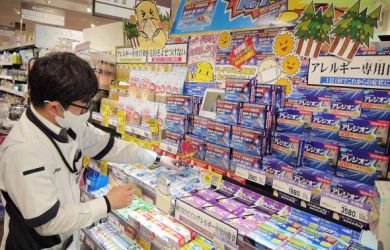
Originally published on metropolis.co.jp on February 2014

For Japanese football, 2014 is a big year. The national team will be heading off to Brazil to play in the World Cup in the summer, changes are coming for the J. League and we’ll see the end of the old National Stadium, which will be rebuilt for the 2020 Olympic Games.
The highlight of the year—well, hopefully for Japan’s fans—will be the World Cup. It will mark the end of Alberto Zaccheroni’s tenure as Japan manager and, as is usual, will be his final exam.
At the last World Cup, Takeshi Okada’s men were in dreadful form before heading to South Africa, but they underwent an amazing transformation once they were there (one that even the coaching staff were unable to explain). They beat Cameroon in their first match, lost to the Netherlands 1-0 in their second and then stunned Denmark 3-1 to advance to the Round of 16 where, after a 0-0 draw with Paraguay, they went out 5-3 on penalties.
The national team has found better form going into 2014, but there are still plenty of question marks hanging over Zaccheroni’s men. Japan’s performances at the 2013 Confederations Cup were erratic, losing poorly to Brazil and Mexico, but playing superbly in 4-3 defeat to Italy. Dire losses to Serbia and Belarus in Europe had the media in panic mode again—some even calling for Zaccheroni’s head—but a good draw against the Netherlands and a convincing win over a strong Belgium lineup boosted the Italian’s stock and ended the team’s year on a high note.
Japan’s first test of 2014 will be against New Zealand at the National Stadium on March 5. The game will be the team’s final appearance at the National Stadium, which hosted the 1964 Olympic Games. Japan’s final game before heading to the World Cup will be against Cyprus at Saitama Stadium 2002 on May 27.
At the December draw for the World Cup, Japan were relieved to miss out on the big guns of world football and are quietly confident of reaching the Round of 16 for the third time. In Brazil, they will play Ivory Coast on June 14, Greece on June 19 and Colombia on June 24.
While all these games can be won, a lot will depend on which Japan team turns up—the confident 11 that almost beat Italy and the Netherlands or the losing side that crumbled against Serbia and Belarus.
Consistency has not been one of the best features of Zaccheroni’s four years in office. Japan boasts of a large number of players plying their trade at top clubs in Europe, but some aren’t plying enough. There’s concern over star striker Shinji Kagawa, who has been largely sidelined at Manchester United since the arrival of new manager David Moyes at the start of the season. Likewise, central defender Maya Yoshida has been used sparingly by Southampton (who also released 2011 Asian Cup hero Tadanari Lee and eventually transferred him to Urawa Reds). While Japan has a wealth of talent in midfield and attack, the defense has come under considerable pressure over the last year, with the media getting their knives out for the regular back four: Yoshida, Yuto Nagatomo, Atsuto Uchida and Yasayuki Konno. There has even been talk about trying to bring back veterans Tulio and Yuji Nakazawa, who will be 33 and 36, respectively, when the World Cup is staged. While they could bring a lot to the team, it is unlikely that Zaccheroni will shift away from his current group of players.
The Italian coach will be relying on the likes of Keisuke Honda, Yasuhito Endo, Makoto Hasebe and Kagawa to lead his team in Brazil. They’ve got the ability; they just have to use it.
Japan vs. New Zealand. National Olympic Stadium, Mar 5.







